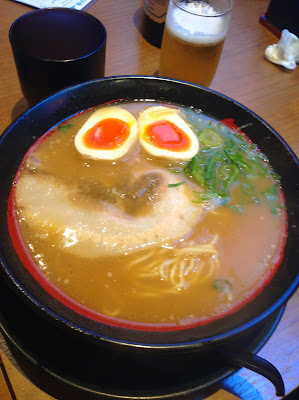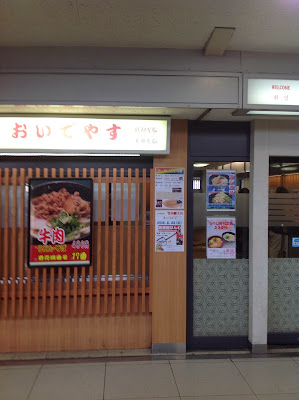Nevertheless, a plan, as far back as October of last year, has been hatched. This is the first part of our 3-city sojourn. And what an experience it has been.
The good things about planning a vacation months ahead are, first, one gets to buy cheaper airfare; second, you have extra time to save for that additional pocket money; and third, you have enough time to do a bit of research and plan your itinerary better.
Thus, these are a few need to know:
Thus, these are a few need to know:
- Japan is still new to its own tourism industry so they require most nationalities to enter the country with a visa. Check first if you need to apply for one.
- It is hard to be mobile within the country without a Japan Rail (JR) Pass. As a temporary visitor/tourist, it is required of you to buy it online beforehand. The ticket is delivered to your residence (so make sure you allot 5 working days at the latest before your flight out). Upon arrival at your first Japanese city, you will have to exchange your ticket for the JR Pass itself, which you can now use to travel via train, bullet train, the Tokyo monorail, bus or ship that carry the JR logo.
While the Pass does not apply to subway and taxi rides (unlike Hongkong's Octopus card), you will still save a ton on transportation expenses.
- Be sure to book your hotel/accommodations in advance, and have an itinerary in mind, especially if you will require a visa to travel. These are important facts to be supplied to the consulate.
Our ultimate destination was Tokyo, but dropping by Osaka even for just a day was a welcome introduction to Japan.
We arrived at Japan's second largest city (and among
the largest city in the world with 19 million residents) the night before our sight seeing. We settled ourselves in our accommodations located at the Namba-Shinsaibashi area, known as the restaurant bloc of Osaka.
Although our hotel is in the more quiet part of the city, it was easy to find a place to have our dinner. Many all-nighters are open which offer home-style dishes such as beef gyudon with or without egg,
udon/soba noodles in salt or shoyu (pork) broth,
or you can go next door for curry rice meals.
Most dining places are manned by just one person who prepares and serves the dishes to you. Payment is made via a vending machine where you get a ticket and present it to the dining staff. Not to worry, service is very efficient. You are served your meal in no time.
To start our visit the following day, Hotel Relief Namba, where we stayed, houses Hummingbird Cafe, which is very popular in Osaka for its pancake breakfast buffet,
pancakes are cooked upon request,
alongside with traditional Japanese breakfast of salad, cold noodles and bread (JPY1,000).
But in case you are not in the mood for that, you are likely to be a regular at Family Mart, a very well-known convenience store and there's one every few meters or so in the city (also sprouting branches in Metro Manila actually). Sandwiches and onigiris are cheap breakfast alternatives for you.
A day in Osaka means we will only be able to experience two places. Thus, feeling very touristy, we proceeded to Osaka Castle.
What was once a monastery of the Joudoshinshu Buddhist sect, and later a castle built by Nobunada Oda who unified Japan, is now a museum that relates the history of Osaka from the Ishiyama Honganji Era (1496) to the Showa Period (1931).
From the subway station, there is a long walk towards the castle as you pass through its gardens and park. Much of these areas are restorations since their destruction during the bombing raids of World War II.
On the way to the castle, try out the street food scene. There's ice cream to cool you down.
A sampling of commercial takoyaki (JPY300), which are octopus balls that originated right here in Osaka.
Or try a Dango, glutinous rice balls, grilled and glazed with teriyaki sauce (JPY300).
We especially liked the beef yakitori - big chunks of beef on skewers and plainly salted. The beef was very tender and melts in the mouth.
Wow, the JPY700 price tag could give the best restaurants in the world a run for their money.
At the Castle, the museum entrance fee is JPY600.
Aside from admiring the many well-preserved samurai armour and weapons, and documents crafted during Osaka's turbulent history, have a bit of fun in posing for pictures wearing the Kimono or different Samurai attires (cough up another JPY600/person/costume).
Most of our morning was spent well at this site. For lunch, Osaka's train/subway stations offer the ubiquitous soba/udon meal. Take your pick and eat at the bar standing (around JPY500).
For a cool spring day, it is quite a pick'er-upper.
A stay in Osaka will not be complete without going to Dotonbori Street, and its surrounds which make up the bustling shopping district of the city. You'll know when you've reached it when you see the Glico Man, the big crab logo of Kani-Doraku, and the Shochiku-za Theatre, the only remaining clue of the active participation of the performing arts in the city.
Here we got a real taste of the Takoyaki,
a quiet interlude in a ramen bar,
 and after all that walking that led us to the Dotombori canal, another pit stop at a watering hole for some beer, and edamame, as the boats of the Tombori River Cruise pass by.
and after all that walking that led us to the Dotombori canal, another pit stop at a watering hole for some beer, and edamame, as the boats of the Tombori River Cruise pass by.
As our visit in this colourful, vibrant city comes to an end, what better way to cap the day off than a stop at another watering hole, (keep your eyes open for small ones), that serves Osaka yakitori - which means the skewered morsels here are all breaded and deep-fried, from baby tomatoes, to mushrooms, to chicken and pork belly. (Note: Follow the one-time dip rule into the sauce)
Washes well with the local brew.
Osaka was given a famous saying from their counterparts in Tokyo "Osaka wa kuidaore" (or Osaka people eat 'til they drop), but when your adventure is food, this is one of the best places to be.
Next stop: Kyoto.
Our ultimate destination was Tokyo, but dropping by Osaka even for just a day was a welcome introduction to Japan.
We arrived at Japan's second largest city (and among
the largest city in the world with 19 million residents) the night before our sight seeing. We settled ourselves in our accommodations located at the Namba-Shinsaibashi area, known as the restaurant bloc of Osaka.
 |
| (with Eric & Jaz of EricJazFoodies) |
Although our hotel is in the more quiet part of the city, it was easy to find a place to have our dinner. Many all-nighters are open which offer home-style dishes such as beef gyudon with or without egg,
 |
| (gyudon with miso soup) |
 |
| (gyudon with egg) |
udon/soba noodles in salt or shoyu (pork) broth,
or you can go next door for curry rice meals.
 |
| (chicken curry) |
 |
| (hamburg curry with egg) |
 |
| (pork curry) |
Most dining places are manned by just one person who prepares and serves the dishes to you. Payment is made via a vending machine where you get a ticket and present it to the dining staff. Not to worry, service is very efficient. You are served your meal in no time.
 |
| (vending payment machine with hammy daughter) |
To start our visit the following day, Hotel Relief Namba, where we stayed, houses Hummingbird Cafe, which is very popular in Osaka for its pancake breakfast buffet,
pancakes are cooked upon request,
alongside with traditional Japanese breakfast of salad, cold noodles and bread (JPY1,000).
But in case you are not in the mood for that, you are likely to be a regular at Family Mart, a very well-known convenience store and there's one every few meters or so in the city (also sprouting branches in Metro Manila actually). Sandwiches and onigiris are cheap breakfast alternatives for you.
 |
| (photo by I hunger on www.pinterest.com) |
A day in Osaka means we will only be able to experience two places. Thus, feeling very touristy, we proceeded to Osaka Castle.
What was once a monastery of the Joudoshinshu Buddhist sect, and later a castle built by Nobunada Oda who unified Japan, is now a museum that relates the history of Osaka from the Ishiyama Honganji Era (1496) to the Showa Period (1931).
From the subway station, there is a long walk towards the castle as you pass through its gardens and park. Much of these areas are restorations since their destruction during the bombing raids of World War II.
On the way to the castle, try out the street food scene. There's ice cream to cool you down.
A sampling of commercial takoyaki (JPY300), which are octopus balls that originated right here in Osaka.
Or try a Dango, glutinous rice balls, grilled and glazed with teriyaki sauce (JPY300).
We especially liked the beef yakitori - big chunks of beef on skewers and plainly salted. The beef was very tender and melts in the mouth.
Wow, the JPY700 price tag could give the best restaurants in the world a run for their money.
At the Castle, the museum entrance fee is JPY600.
 |
| (brother and sister in law in character) |
Aside from admiring the many well-preserved samurai armour and weapons, and documents crafted during Osaka's turbulent history, have a bit of fun in posing for pictures wearing the Kimono or different Samurai attires (cough up another JPY600/person/costume).
Most of our morning was spent well at this site. For lunch, Osaka's train/subway stations offer the ubiquitous soba/udon meal. Take your pick and eat at the bar standing (around JPY500).
For a cool spring day, it is quite a pick'er-upper.
 |
| (soba noodles with chicken, beef & fishcake) |
Here we got a real taste of the Takoyaki,
a quiet interlude in a ramen bar,
 |
| (shoyu ramen with duck egg in salt broth) |
 and after all that walking that led us to the Dotombori canal, another pit stop at a watering hole for some beer, and edamame, as the boats of the Tombori River Cruise pass by.
and after all that walking that led us to the Dotombori canal, another pit stop at a watering hole for some beer, and edamame, as the boats of the Tombori River Cruise pass by.Washes well with the local brew.
Osaka was given a famous saying from their counterparts in Tokyo "Osaka wa kuidaore" (or Osaka people eat 'til they drop), but when your adventure is food, this is one of the best places to be.
Next stop: Kyoto.



























Thanks for dropping by and leaving a comment Karen!
ReplyDelete